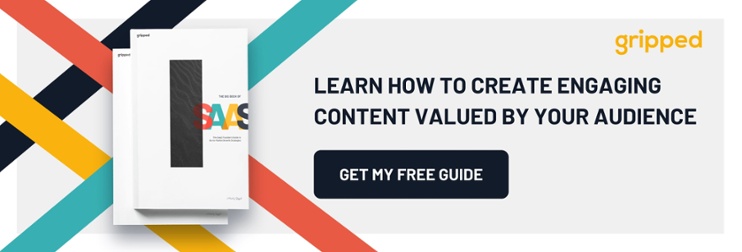We talk a lot about finding leads, but not always enough about nurturing them. In fact, it often takes as many as 10 unique touchpoints for a lead to convert. While you shouldn’t be ‘pushy’, you do need to follow up on prospects and do your best to turn them into customers.
Because touchpoints have to be unique, you need to use multi-channel strategies to reinforce your brand at different buyer stages and keep leads moving through the funnel. While we obviously aren’t going to convert every single possibility into a lead, and even less into a customer, these strategies can help you to maximise conversions, and help push leads towards that all important sale.
Strategy 1:
The early bird catches the worm
Response time is key. How fast? Well, if you follow up a lead within 5 minutes, it can increase the chance of converting by 10x. However, according to one study, only 37% of companies respond to their leads within an hour, and 23% never respond at all…
So, how do you speed up response time?
Obviously, the ideal situation is to respond as soon as a form is submitted. But it’s essential to remember which stage of the buyer’s journey they are at and this can be based on the type of form they have submitted. Top of the funnel leads that have downloaded content should be enrolled in automated email workflows to ensure fast follow-ups and we will cover this in more detail later in this article.
For every lead it’s vital to set up notifications that link website forms to your CRM and updates records, but especially for bottom of the funnel leads that have submitted any type of contact form (e.g. book a demo). This will provide sales teams with immediate data on the lead information and their browsing of the site, so they can quickly research and contact the lead. A good salesperson will also know which leads are not going to be worthwhile right away and where to direct their efforts. And remember — the first email or phone call should be personalised and show that you know who they are.
Strategy 2:
Content is king
Content is king. And content is about building trust and educating, not selling. If all of your blog posts are ‘Buy my product. This is why you should buy my product. Hey, this is how amazing my product is’ then people are going to stop trusting your content, and if they don’t trust your brand, they definitely won’t trust your product.
Ultimately, people don’t care about what your product is, they care about what it does. They have a problem that needs solving, and all of your content should be aimed at their specific pain points and should be focused on educating. For example, if you sell password management software, you should be providing content on cybersecurity, how not to get phished, etc. Then gently bring the content around to how your product can solve their pain point, or even better include CTAs throughout the article that are topical, targeted and highlight the value your product provides. What’s important is to show that you know what you are talking about and develop trust.

It’s particularly important when you have a new lead not to send promotional content right away, but focus on helping them and educating them. This should be the first seven emails after the lead signs up for your list. One thing you can do is create a seven part course that you email to leads every other day once they’ve downloaded their first bit of content..
‘Dripping’ it out to leads is often better, so you aren’t overwhelming them with too much information at once. This should be part of your overall lead nurturing campaign, and should be based off of your target audience and buyer personas.
Strategy 3:
Like a well-oiled machine
Automated emails can easily turn into spam, but if you do them right they are an extremely effective way to nurture leads.
Rule 1: Not every email should be sent to every lead.
If you do that then, yes, you are spamming people. Instead, your leads should be segmented by persona and buyer stage. You should not send the same email to a brand new small business as you would to an established, medium-sized business whose pain points you already know. Rather, you should have a number of email campaigns and lists for different buyers and circumstances. Your offerings and content need to be built around personas and the different buyer stages. We already talked about not sending promotional content right away. The best way to do it is to send relevant blog posts and eBooks to new leads. Once they have stuck around for the first seven emails, then start sending them links to demos and trials.
Your offerings and content need to be built around personas and the different buyer stages. We already talked about not sending promotional content right away. The best way to do it is to send relevant blog posts and eBooks to new leads. Once they have stuck around for the first seven emails, then start sending them links to demos and trials.
It’s important to make sure you collect the right information from the beginning so you can assign leads to the right buyer persona. Nothing gets somebody to unsubscribe faster than information that is blatantly irrelevant. In other words, while you can absolutely use automated lead nurturing, it has to be done carefully, and must stay relevant.
Article continues below.
We love solving problems, what are yours? 🔍
Talk to one of our experts for free advice on how to solve all your growth problems. We can help you generate, nurture and convert more leads, enabling you to achieve profitable growth.
Make sure the emails are personalised. Even as simple a thing as merging in the person’s name can make a huge difference. Even if people consciously know it’s a mass email, if it has their name in it they won’t see it as such. Make sure the email looks like it’s coming from a person, not a mailing list. If you can also insert details about their company or things relevant to their location, even better.
Oh, and make sure the system works. Another quick way to get somebody to unsubscribe is to send them an email with the wrong name in it, and I’ve seen it happen many a time!
Strategy 4:
Remember us?
Retargeting is one way you get those unique touchpoints, while it’s less effective as a lead generation strategy for B2B, it’s a great tool for brand awareness and subliminally delivering your messaging, reminding visitors to your website of what they were looking at earlier in the day, week or month. In other words, it’s a great way to subtly shout about your brand. You can launch retargeting campaigns on Google Ads and social media, which offers a great set of tools for this. Facebook is making a comeback for B2B and can be particularly effective for advertising. Ultimately, if somebody sees an ad that reminds them of the conversation you had or that they got part of the way through the subscription process, they may well be drawn back and end up converting.
You can launch retargeting campaigns on Google Ads and social media, which offers a great set of tools for this. Facebook is making a comeback for B2B and can be particularly effective for advertising. Ultimately, if somebody sees an ad that reminds them of the conversation you had or that they got part of the way through the subscription process, they may well be drawn back and end up converting.
Strategy 5:
Cut out the sibling rivalry
Like two siblings constantly butting heads, sales and marketing have been labelled as rivals since the beginning of time. And far too many B2B SaaS and tech companies add to this assumption by viewing sales and marketing as entirely different entities. The lineal view that marketers worry about lead generation, and sales worry about converting leads into sales suggests that their roles don’t align, but this is fundamentally incorrect.
In the past you could get away with having them be separate things. The days of billboards and direct mail are, while not over, somewhat eclipsed by the modern reality of digital marketing and the abundance of readily available information online. All of this means that sales and marketing, while still separate teams, need to work strongly together, and they have to start talking to each other! Sales needs access to marketing’s data. Marketing needs to know which of the leads they send over to sales actually convert, as well as the conversations sales are having and the questions they are commonly asked which can be answered in content.
All of this means that sales and marketing, while still separate teams, need to work strongly together, and they have to start talking to each other! Sales needs access to marketing’s data. Marketing needs to know which of the leads they send over to sales actually convert, as well as the conversations sales are having and the questions they are commonly asked which can be answered in content.
Sales may also have input on the overall marketing strategy. This is not about integrating sales and marketing, as they still require different skill sets, but rather aligning them so they work together. Both teams need to know what the primary reasons are for losing (and winning) a lead. You need to make an effort to get everyone on the same page and understand why they need to work together.
These five strategies are all part of lead nurturing. While many B2B SaaS and tech businesses try to broaden the funnel, it’s often much more effective to plug the leaks in it, so that once you have a lead you increase the chance of conversion. You are always going to lose leads. Some of the people who contact your company may find your solution is not for them. Having a proper nurturing strategy, however, reduces the number of leads that are lost by you; the number of times you drop the ball and a potential customer goes elsewhere.
